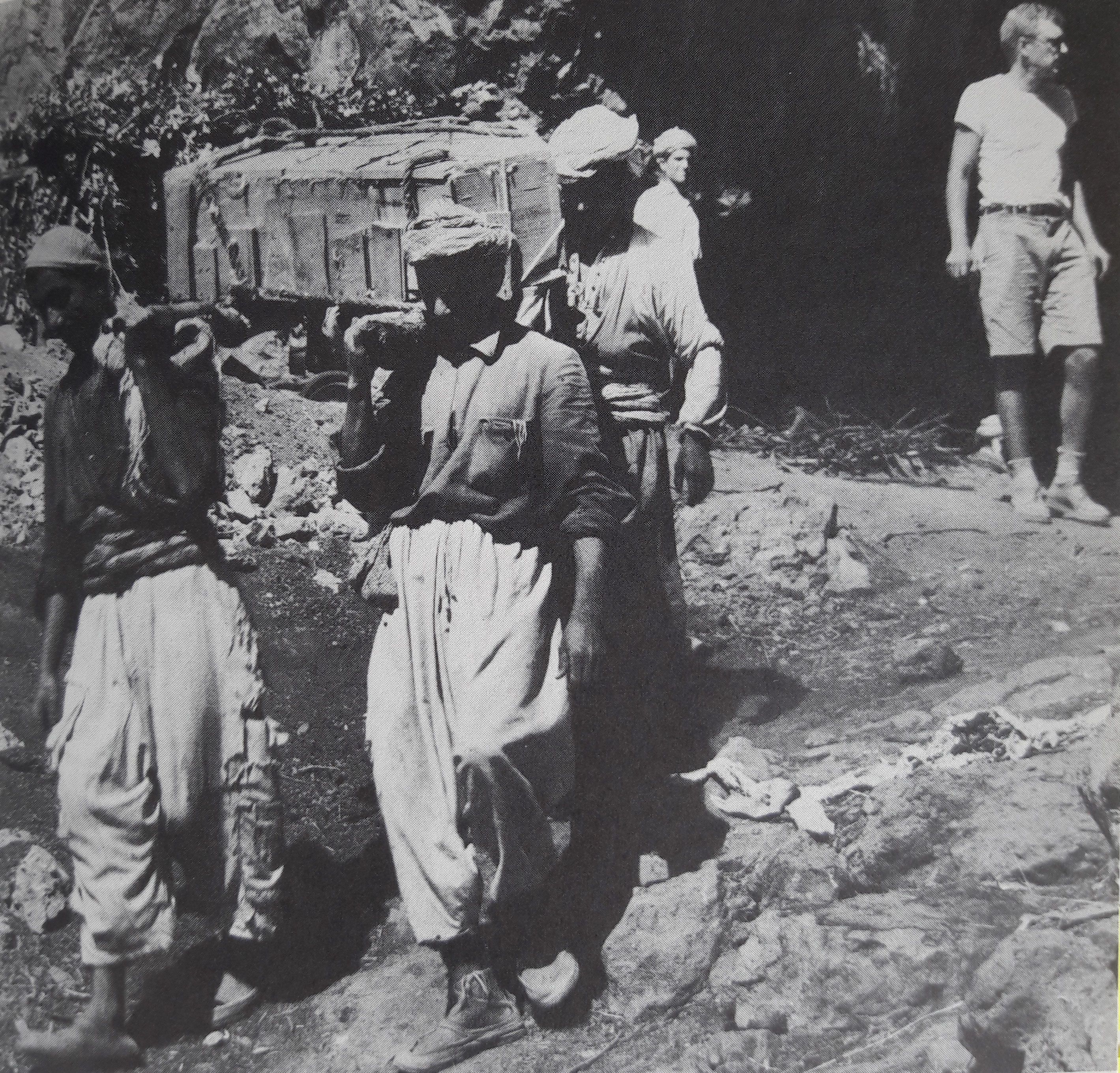The discoveries made in the Shanidar Cave are some of the most thought-provoking and divisive Neanderthal remains ever recovered. Among the handful of skeletons found scattered within the cave, one appears to have been laid to rest alongside significant amounts of pollen.
Some have interpreted this as evidence of a grand burial ritual as if a funeral was held for the Neanderthal and flowers were placed upon their grave. If that claim is correct, it would be yet another example of how Neanderthals possessed a level of emotional intelligence on par with Homo sapiens and suggest the species were not the heavy-browed dopes they are still sometimes portrayed as.
However, this claim is not without its controversy.
Found within the Zagros Mountains in the Kurdistan Region of northern Iraq, the Shanidar Cave was excavated in the 1950s and 1960 by Ralph Solecki and his team from Columbia University.
At least nine Neanderthal skeletons were found buried here at the time, while a later excavation revealed another body. The number of remains found here indicates they were buried in an organized fashion, like a Neanderthal graveyard.

Excavation of the Shanidar Cave in the 1950s. Image credit: Fred Lewsey/Cambridge University
Shanidar IV, the “flower burial” body, remains the most disputed of all the bodies found here. As described by Solecki in the journal Science in 1975, the sediment around the body was dotted with significant amounts of pollen from flowers such as Yarrow, cornflower, bachelor’s button, St Barnaby’s thistle, ragwort, grape hyacinth, horsetail, and hollyhock. Many of these plants have medicinal properties or are known to repel insects.
It’s likely that this Neanderthal was an adult male aged 30 to 45 years old who was buried on his left side in a partial fetal position. None of the other skeletons were found with pollen, which led Solecki to speculate that this individual was a very special man, perhaps even a shaman.
In this line of thought, they were buried with flowers that held a deep cultural or even practical meaning for the community.
“Death knows no season, and perhaps the other individuals found at Shanidar died during nonflowering seasons. Then again, it could be that even if the other individuals had died during a flowering season, for one reason or another they were not accorded the same treatment as Shanidar IV. One may speculate that Shanidar IV was not only a very important man, a leader, but also may have been a kind of medicine man or shaman in his group,” he writes.
However, this interpretation is not widely agreed with and the current consensus is that the presence of pollen is a red herring. Most now believe that the pollen ended up in the cave by small animals dragging flowers into their burrows.
“Deliberate placement of flowers has now been convincingly eliminated,” Paul B Pettitt, an archaeologist at the University of Bristol, wrote in 2002. “A recent examination of the microfauna from the strata into which the grave was cut suggests that the pollen was deposited by the burrowing rodent Meriones persicus, which is common in the Shanidar microfauna and whose burrowing activity can be observed today.”
Some experts even contend that Solecki and his team accidentally contaminated the site with pollen themselves while trampling around the cave during their work.
Nevertheless, these arguments should not undermine just how smart Neanderthals were. A wealth of evidence now shows that Neanderthals had complex communities and were incredibly smart.
While it’s still not fully understood why they fell into extinction around 40,000 years ago, it’s clear that it wasn’t for a lack of brain power. Just like Homo sapiens, they cared for the disabled in their social groups and created brilliant artworks, including some of the oldest known cave art.
The discoveries at the Shanidar Cave might not prove it, but it’s not out of the realms of possibility that Neanderthals buried their dead alongside objects of deep meaning and beauty.
Source Link: Flowery Funerals? The Controversial Neanderthal Found In An Iraqi Cave